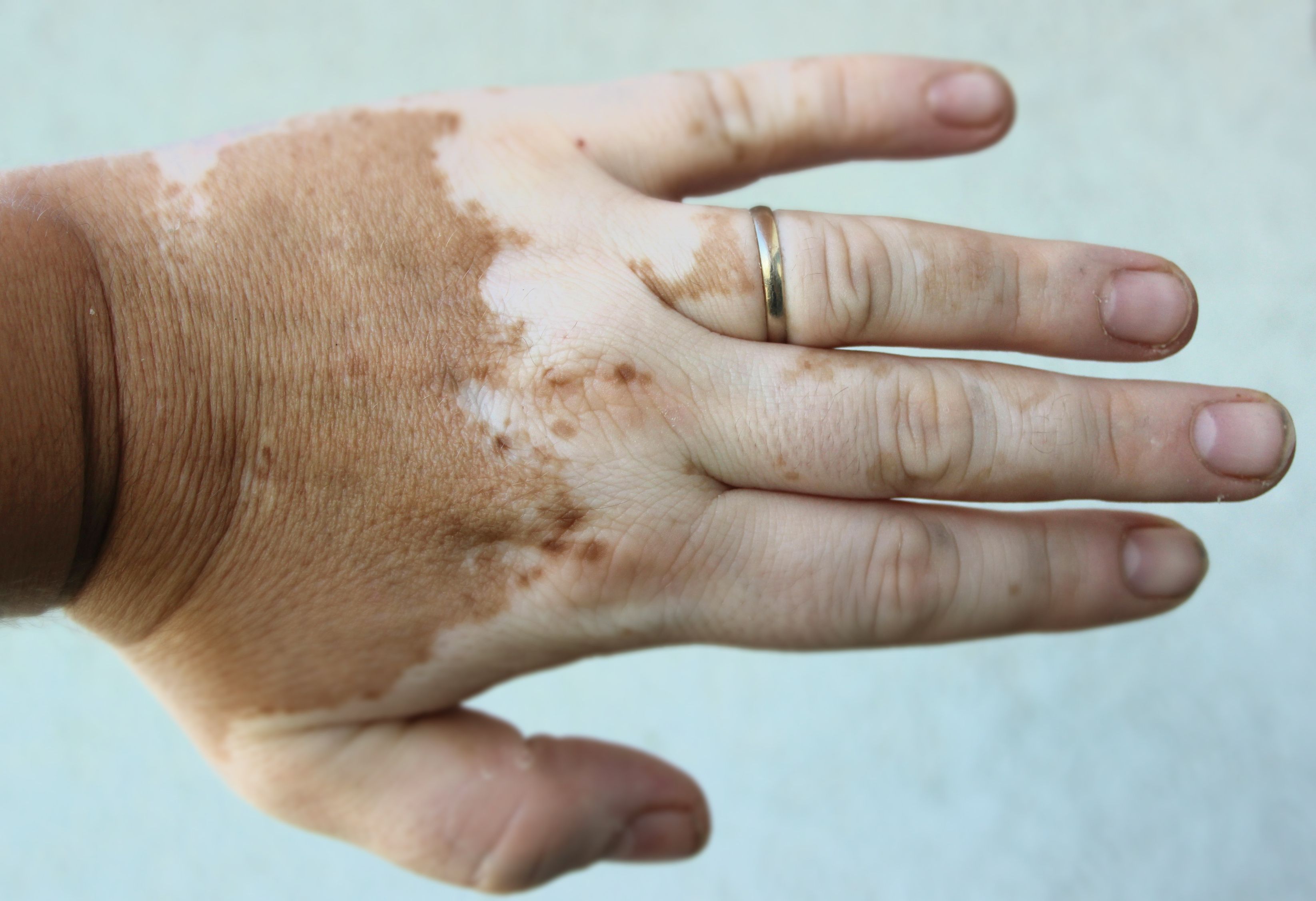- Case-Based Roundtable
- General Dermatology
- Eczema
- Chronic Hand Eczema
- Alopecia
- Aesthetics
- Vitiligo
- COVID-19
- Actinic Keratosis
- Precision Medicine and Biologics
- Rare Disease
- Wound Care
- Rosacea
- Psoriasis
- Psoriatic Arthritis
- Atopic Dermatitis
- Melasma
- NP and PA
- Skin Cancer
- Hidradenitis Suppurativa
- Drug Watch
- Pigmentary Disorders
- Acne
- Pediatric Dermatology
- Practice Management
- Prurigo Nodularis
- Buy-and-Bill
News
Article
Research Presented at AAD Explores Relationship Between Vitiligo and Skin Tone Bias in Google Searches
Author(s):
Several posters presented at the American Academy of Dermatology Annual Meeting explored the topic of skin tone bias related to vitiligo in Google and internet search platforms.
Posters presented at the American Academy of Dermatology Annual Meeting 2024 show that pictures of darker skin made up the majority of the first pictures presented when searching for vitiligo on Google. This finding could point to a general bias when considering other types of skin affected by vitiligo, according to the posters' authors.
Vitiligo can affect patients of any ethnicity or skin tone; however, there is a higher prevalence in Asian and Hispanic patients. Both of these studies were conducted through searching for vitiligo on Google Images. The first study1 used Google Images because it is an accessible website that is often used by patients to collect medical information. The second study2 used a search engine to collect information on how much is understood about vitiligo and how it is represented in the public domain. The studies both aimed to evaluate whether diversity in skin tones was presented in searches.
The first study conducted a search for "vitiligo," "depigmentation," and "losing skin color" in September 2023. The first 50 images were graded on a scale of A (lightest skin tones) through E (darkest skin tones). Darker skin, in general, was categorized as C, D, and E based on the darkness of the skin.
The second study conducted its search of vitiligo on August 5, 2023. Tracking was disabled during this search to reduce personalization bias. Two researchers used the Fitzpatrick classification, which types skin on a scale of I (pale skin) to IV (dark brown or black skin),3 to categorize the first 50 images in Google Images that involved a single individual. Any conflicts were resolved by consulting a third researcher.
In the first study, for the first 50 images each for "losing skin color," "depigmentation," and "vitiligo," darker skin made up 37 (74%), 33 (66%), and 45 (90%) of the first 50 pictures, respectively. The researchers also noted that all of the pictures for all 3 searches only depicted the face and upper limbs, such as hands and arms, rather than other areas that could be affected. Combined, lighter skin accounted for just 23.3% of the photos. They reported limitations of a small sample size, potential rater bias, and the approach they used to classifying skin tones is not an established method.
The second study found similar results, with 72% of the 50 vitiligo images analyzed making up skin tones ranging from types IV to VI on the Fitzpatrick classification scale. Twenty-nine percent of the images were of individuals with type VI, which accounted for the greatest amount, followed closely by skin type V, which accounted for 24% of the pictured individuals. Fitzpatrick skin types I and II had the least representation, at 5% and 9%, respectively.
Both studies concluded that the underrepresentation of a variety of skin types could misdirect individuals who search for medical information on vitiligo, as it could lead to misdiagnoses and clinical biases, and affect treatment, especially in dermatologists who are not as familiar with vitiligo in lighter skin tones. Both studies call for more inclusive and representative portrayals of vitiligo in Google images to improve awareness and elevate empathy for the condition for all skin tones.
References
- Desai S, Friedman A. Skin tone bias of Google Image results for vitiligo. Presented at American Academy of Dermatology Annual Meeting; March 8-12, 2024; San Diego, CA. Abstract 52941
- Anthony MR, Abdi P, Farkouh C, Kaur M. Skin tone depiction in Google Image search results for vitiligo. Presented at American Academy of Dermatology Annual Meeting; March 8-12, 2024; San Diego, CA. Abstract 54244
- The Fitzpatrick classification. DermNet. Accessed March 9, 2024. https://dermnetnz.org/topics/skin-phototype
[This article was originally published by our sister publication, American Journal of Managed Care.]







